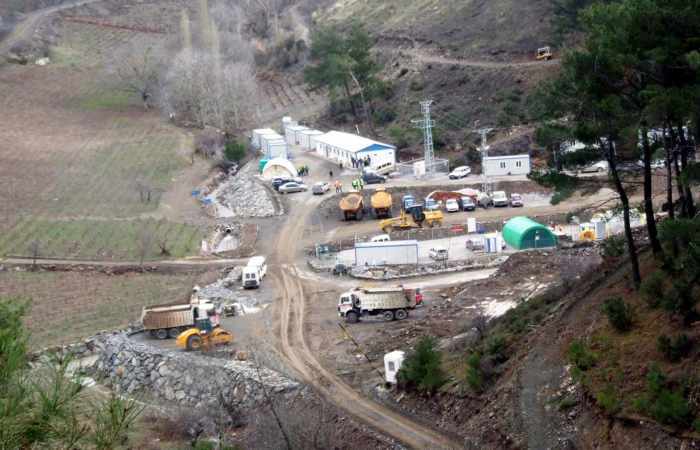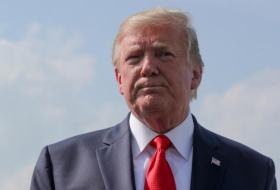Over the past years, the well-orchestrated transfer of Armenian settlers from Armenia and elsewhere into the contested territories (via e.g. Hayastan All-Armenian Fund), including the areas adjacent to Nagorno-Karabakh, in particular the districts of Lachyn, Kalbajar, Gubadly, Zangilan and Jabrayil, has continued with accelerated pace.
To worsen the things, fishing of the human souls exploits an epic human tragedy of Syria and its people: The shadowy Armenian Revolutionary Federation (ARF) is deceiving Syrian Armenians with an instant-better life promise if they relocate from e.g. Qamishli and Aleppo cities in Syria to Caucasus and its occupied territories (e.g. Zangilan, Gubadly and Lachyn districts). Nearly a mass-manipulation replica of the famous call to Bosnian Croatians from Zagreb to settle the former Serb inhabited and ethnically cleansed territories of Croatia. This is of course, a direct criminal meddling into the domestic matters of two sovereign states.
Armenia, directly or via its corporate proxies, continues permanent energy, agriculture, social, residential and transport infrastructure changes in the occupied territories. This is increased and prioritized as to change the demographic character once for good: That of course includes the construction of irrigation networks, water-canalization, roads, power-grids and other vital economic and social facilities. (Several international reports, conducted independently by different FORAs, repeatedly confirmed that property of IDPs has been appropriated. E.g. that empty houses of Azerbaijani internally displaced persons were often dismantled for use as construction materials or that new houses are being built on their lands and properties.)
Armenia exercises pervasive control over the entire economic and commercial system in the contested territories, including inbound and outbound trade flows and economic resources. Tacit presence of the international companies is rather interesting: there are hundreds of various types of US-manufactured Caterpillar machines, farm tractors and equipment of US-based John Deere and Germany’s Deutz-Fahr companies, South Korean Hyundai trucks, Belarus MT3-82,3 model farm tractors, as well as other heavy machinery for illegal mining, agriculture, expansion of settlements and construction of the supporting infrastructure. The true ownership for most of those companies remains unclear, as oftentimes registered offshore in Cyprus, Liechtenstein and the like.
Often their funding is channeled through the branches of Armenian banks operating in the occupied territories and conducting international financial transactions via intermediary banks in Russia, EU and elsewhere. Further on, a numerous foreign retailers, from Ukraine, the US and the EU states (particularly from France, Bulgaria, Hungary, Belgium, Germany, the Czech Republic, the Netherlands), as well as from Australia and UAE, have concluded their supply contracts with Armenian companies. That, of course, makes them complicit with Armenia’s occupation of the territories, drain of resources, expansion of illegal settlements as well as with a violation of fundamental rights of IDPs.
Little wonder, since Armenia’s high-ranking officials, including President Sargsyan, PM Abrahamyan and other ministers, routinely visit the occupied territories and inspect production facilities there. To camouflage the illegal nature of production there, Armenian agricultural and liquors export companies (e.g. “Stepanakert Brandy Factory” and “Artsakh Fruit CJSC”) routinely mislabel the products wholly or partially produced or packed in the occupied territories as originating from Armenia, thus misleading governments, international retailers and consumers.
The agricultural lands in the contested territories along the Araz River (Zangilan and Jabrayil districts, too) have been illegally appropriated and extensively exploited by Armenia. This poses a stress on natural water flows (for consummation, irrigation or opportunity for an illegal electricity generation) and soil (overuse of arable lands and monoculture cropping) – which, in return, alters micro climate and jeopardizes the biota and human existence (e.g. Armenia’s Arm Water Project Company Ltd. in the Araz Valley).
Dismantling of infrastructure (metals, pipes, bricks and other construction materials) from the ruins of demolished Azerbaijani households and public buildings was previously conducted more sporadic. However, the currently examined cases show that it becomes more organized system of pillage with a clear foreign involvement.
Mining of the precious minerals and metals is one of the main enterprises in the occupied territories. E.g. Gyzylbulag underground copper-gold mine (wholly owned subsidiary of Armenia’s Vallex Group CJSC, registered in Liechtenstein), led to its almost complete depletion. Similar faith is of Demirli open-pit copper and molybdenum mine. In 2014, Gold Star CJSC reportedly started exploitation of gold near Vejnali village (occupied Zangilan district of Azerbaijan). Since 2007, GPM Gold, a subsidiary of Russia-based GeoProMining Ltd., has been extracting ore in Soyudlu gold mine in the occupied Kalbajar district.
There is an illegal traffic in natural resources across the occupied section of the international border between Azerbaijan and Armenia that is controlled by the armed forces of Armenia via Armenia constructed Vardenis-Aghdara highway. The Government of Armenia, via its Energy Ministry, is directly operating: The ore concentrate from Gyzylbulag is transported to Armenia, where it is further processed into gold containing copper and exported to international markets, mainly to Europe. Armenia is also extracting coal from the mine near Chardagly village in the occupied part of the Tartar district to supply the power plant in Yerevan, Armenia.
There is a clear correlation between the business and the political status quo. Hence, it is safe to conclude that the prolong occupation directly translates into more mineral, agricultural, water resources and other wealth for the neighboring government and gloomy international business. Demographic engineering is a key here, and is – of course – done by conflicting the fundamental human rights and norms of humanitarian law, including those of IDPs.
In its epilogue, a clandestine population-reshuffle coupled with illegal economic activities on the contested territories produces the notorious “blood diamonds”: socio-political status-quo, demographic inversion, and extension of the armed conflict.
Is there anything larger than a problem of such a huge gravity for the resident population?
Of course, there is. Our silence about it !
Aleksandra Krstić, studied in Belgrade (Political Science) and in Moscow (Plekhanov’s IBS). Currently, a post-doctoral researcher at the Kent University in Brussels (Intl. Relations). Specialist for the MENA-Balkans frozen and controlled conflicts.
More about: #Armenia
















































